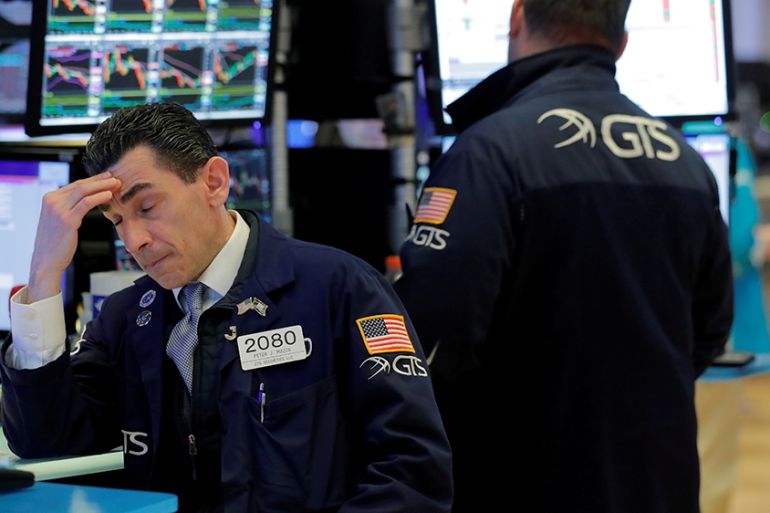US markets have wild swings but end with small gains
Gains were led by cyclical stocks and tech.

After a rough start, US markets rose on Monday, in large part because the United States Federal Reserve announced it started buying corporate bonds to ensure companies can borrow through the bond market during the pandemic. The move boosted investor confidence, which had been wavering because of a spike in new COVID-19 cases.
After initially falling more than 600 points, the Dow Jones Industrial rose 0.62 percent to end that day at 25,763.16. The S&P 500 – a gauge of the health of US retirement and college saving accounts – rose 0.83 percent after dipping below 3,000 points at the start of the trading day. The tech-heavy Nasdaq composite index rose 1.43 percent.
Keep reading
list of 3 itemsUS economy officially entered recession in February. Now what?
As unrest grips the US, the economy adds 2.5 million jobs in May
A flood of liquidity in the form of fiscal and economic stimulus, along with uneven but steady reopenings of state and local economies, sparked a remarkable rally in the stock market since its late-March trough, with S&P 500 financials among the days biggest percentage gainers.
“The banks probably have a bunch of corporate debt on their balance sheets, and now there’s a buyer for it,” Pavlik added. “Someone’s going to be buying those bonds because the Fed is telling them it’s OK.”
But surging new cases of COVID-19 in China, where the pandemic originated, prompted the reintroduction of containment measures, and record hospitalisations in several US states dampened investor risk appetite.
On the flip side, an uptick in China’s factory output and a much-better-than-expected Empire State manufacturing report gave evidence that the pandemic-hobbled global economy was on the road to recovery.
Earlier, the US Federal Reserve announced it had opened registration for its Main Street Lending Program to help businesses weather the storm of mandated lockdowns.
While the Fed sees the economy picking up in the second half of this year, it still expects it to shrink 6.5 percent in 2020. The unemployment rate, which clocked in at 13.3 percent in May, is forecast to only come down to 9.3 percent by year-end. Moreover, the Fed does not see it returning to its pre-pandemic February level of 3.5 percent until the end of 2022.
The grim prognosis combined with a resurgence in COVID-19 cases in the US and China is dashing hopes for a V-shaped recovery – characterized by a steep plunge in economic activity followed by an equally sharp rebound.
Last week, the central bank provided its first pandemic era outlook, and market participants will be closely following Fed Chair Jerome Powell’s testimony this week before Congress for details on the central bank’s sombre economic projections.